You’ll recall that I detailed a trip to Sugarloaf on this blog back in March of last year. Well, on Saturday (March of this year), Lily and I returned to this distinctive knob of quartzite for a five-mile hike. Along the way, we saw plenty of metamorphosed quartz sandstone (now quartzite), which was similar to what we saw on the previous Saturday’s hike, to Buzzard Rock on the northeast tip of Massanutten Mountain. However, it’s (probably) much older, and it’s certainly more messed up by mountain-building.
The main geological features of the trip were: rare examples of primary structures (cross-bedding and ripple marks) and numerous examples of tension gashes filled with milky quartz. How about a post for each? Let’s start with the primary structures…
In a nutshell, here’s what doing geology at Sugarloaf is like, 90% of the time:
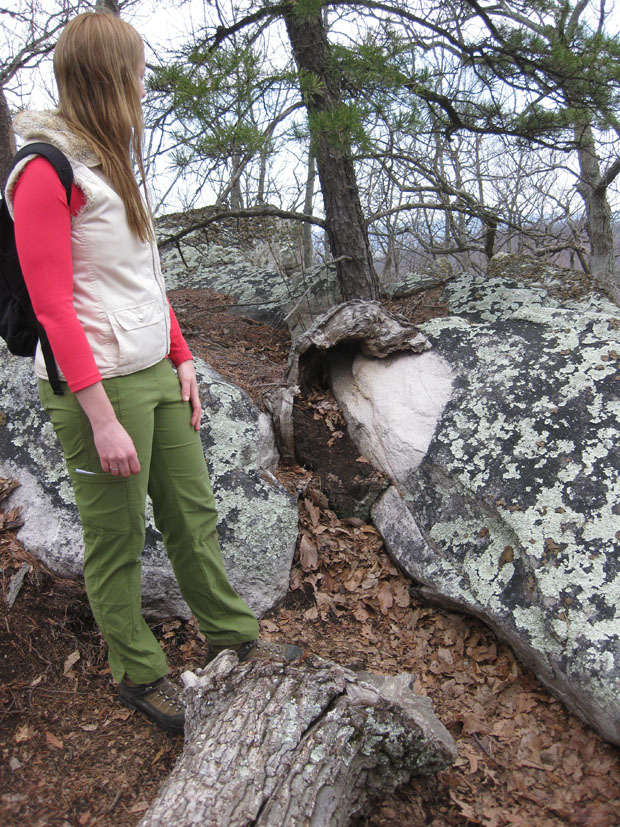
That’s a spot where a tree was growing on a big boulder of the Sugarloaf Mountain Quartzite, and then the tree died, and peeled off the rock face, falling across the trail. Where it was protecting the boulder, you can see gleaming white quartzite, and next to where-the-tree-used-to-be, you can see the more typical exposure — which is to say, not much exposure. The available rock surface is colonized by an array of lichens, mildew, and mosses, such that the rock itself is almost totally obscured. Here’s a closer look:
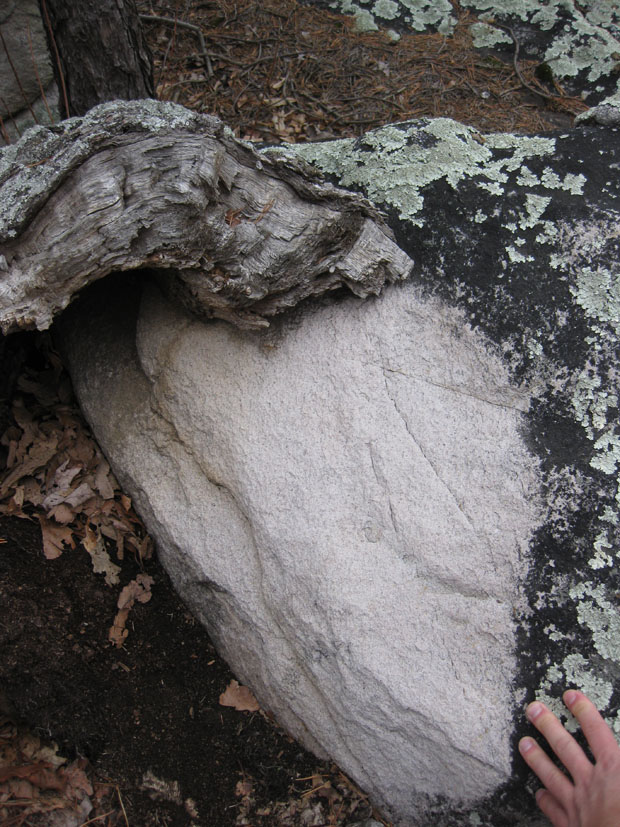
That, my friends, is east coast geology in microcosm. The rock here is a quartz-rich metasandstone of putatively Cambrian age. In most places it is cemented with quartz, but there were some places where it appeared to have a hematite cement, like in these two samples:
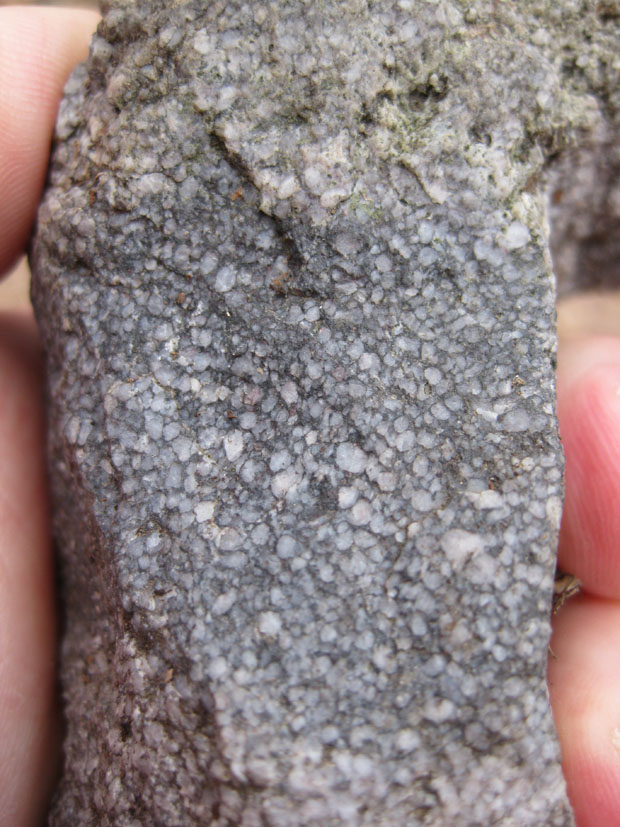
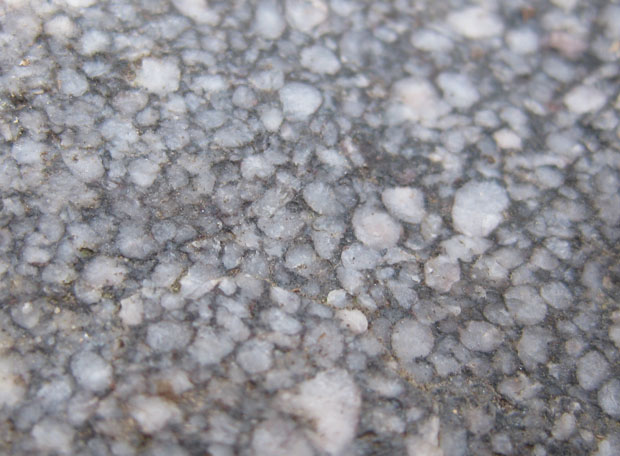

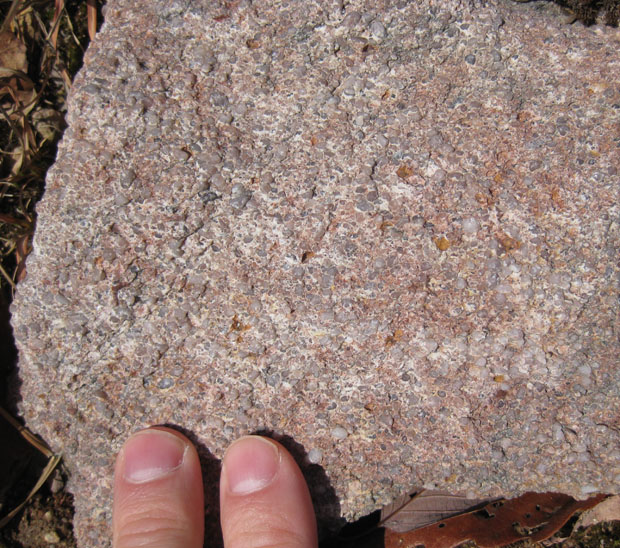
Closer in to this same sample:
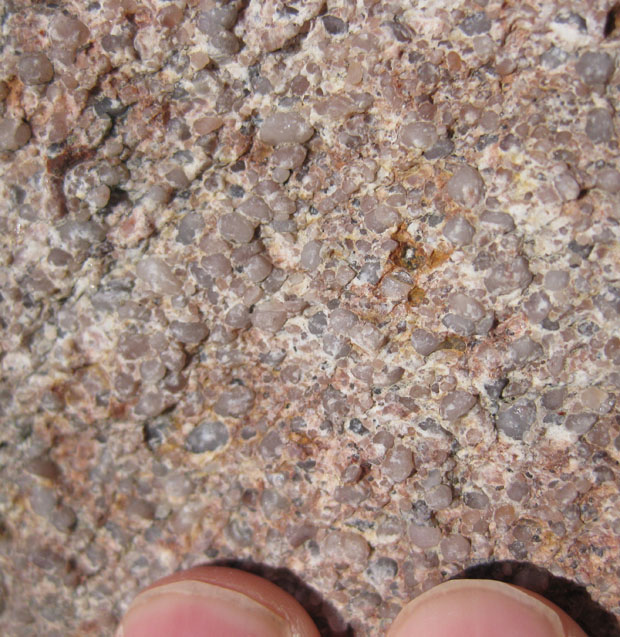
In places, it has kind of a purple-pink tinge to it, like here:
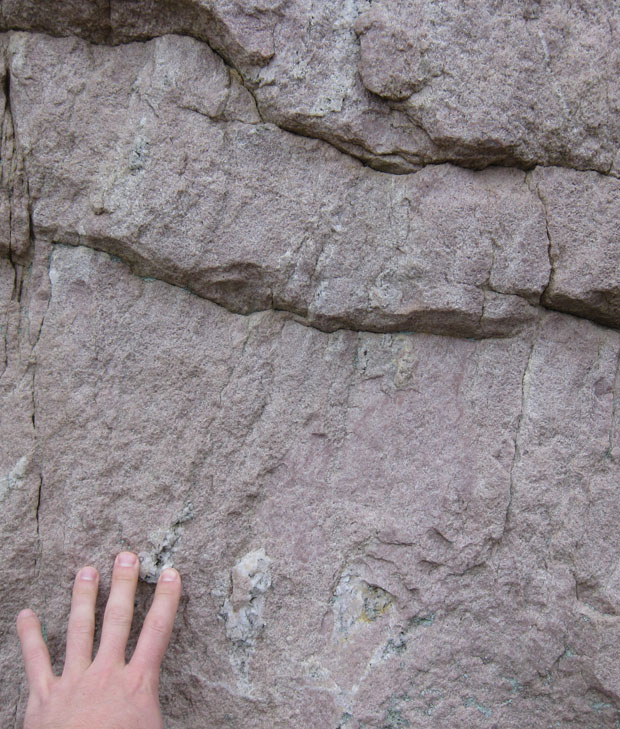
It outcrops in places in big cliffs, splitting along subparallel planes that are probably bedding (hard to tell, thanks to the mostly-homogenous texture of the rock, and all those damned lichens):

So that’s the rock. Here are a few examples of primary structures. First, the ripple marks:
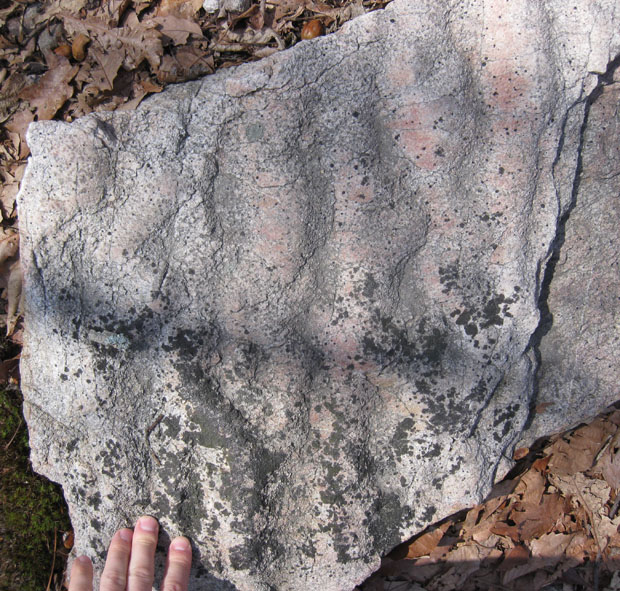
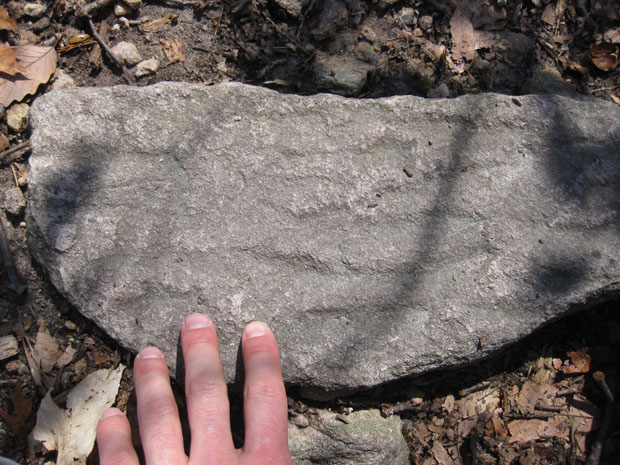

Big, sinuous ripples:

Same set of ripples, viewed from the opposite direction:

I was lucky to finds lots of quality cross-beds on my hike, assuming that by “lots” we are talking relative to east coast standards in the thoroughly metamorphosed Piedmont province. So, if you literally translate “lots,” we’re talking about six examples over four hours. Here’s a few of them:
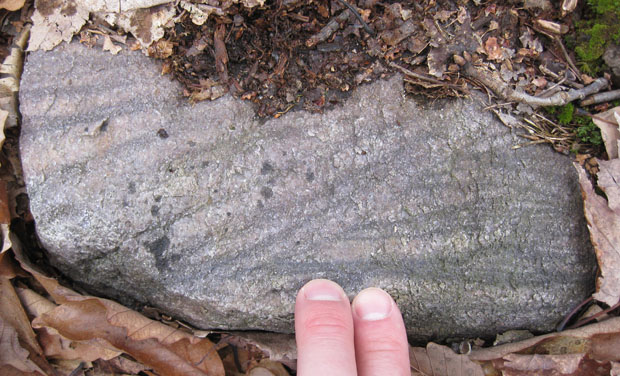

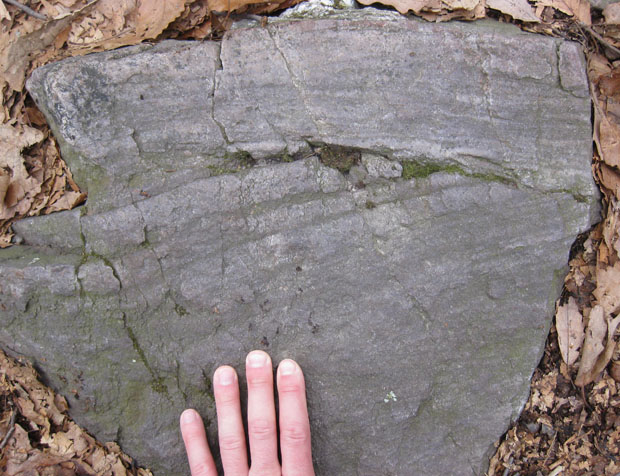
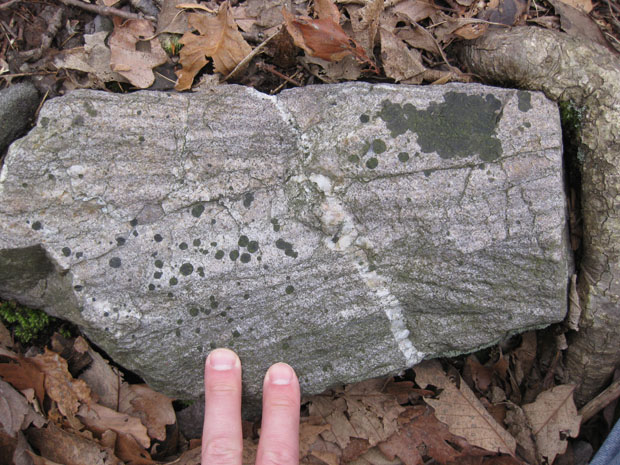
This last one is cross-cut by a vein of milky quartz, which is convenient, because that’s the next thing I want to talk about… tomorrow!

Great pics Callan, and very good examples of cross bedding. I have to upload more photos myself. But living in England, the amount of good outcrops is really low (in comparison with the Cantabrian Mts. in Spain, from where I am from…)
I am looking forward the next post, about the quartzitic veins!